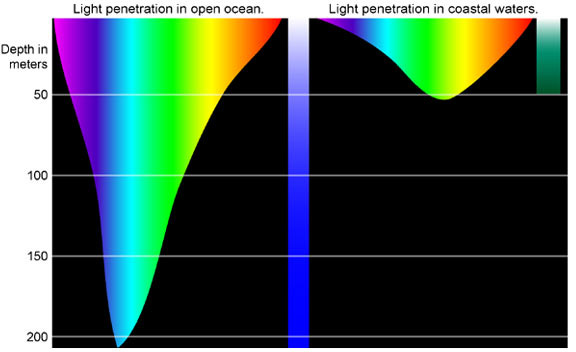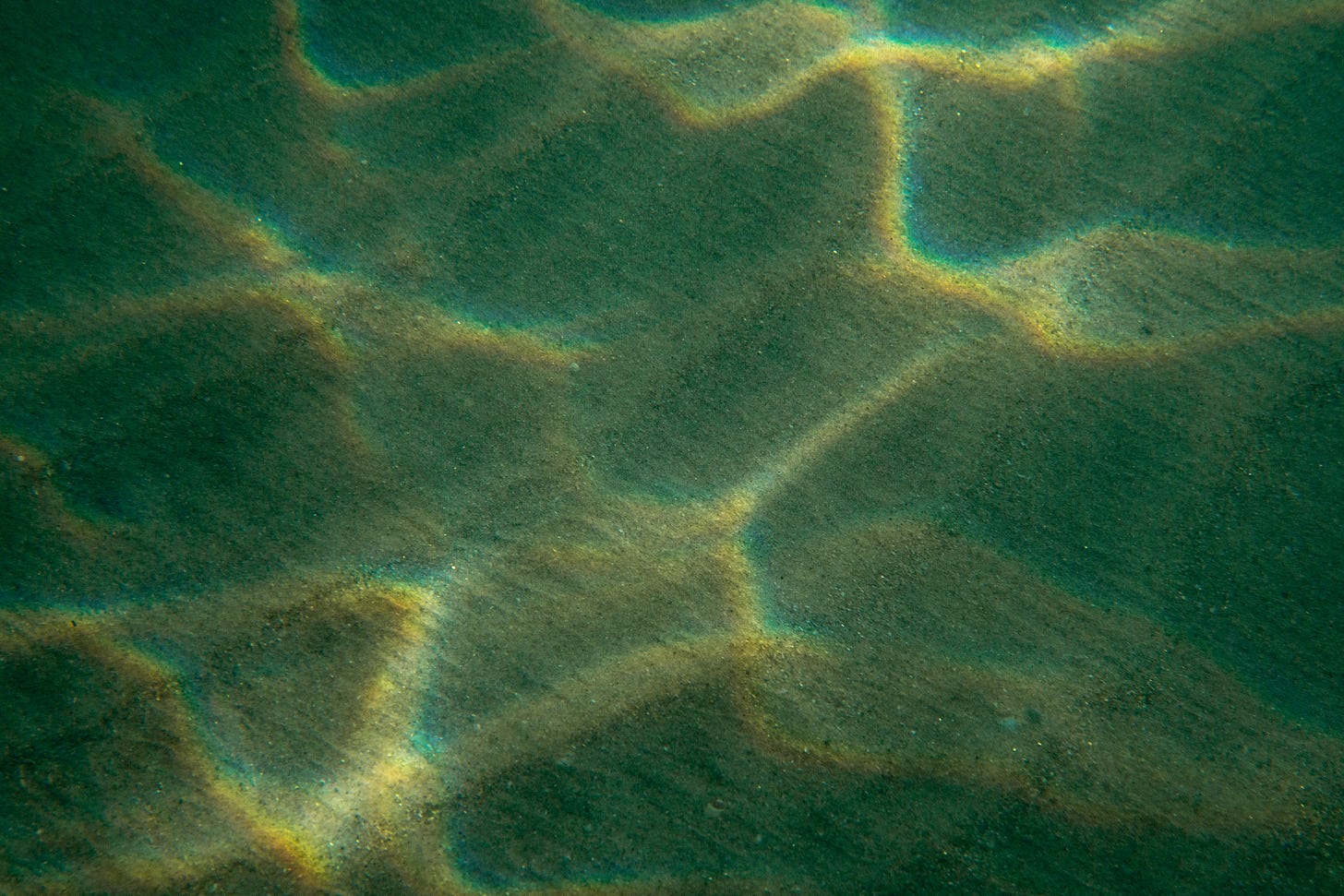Why is the ocean blue?
You've probably noticed the water isn't always the same shade of blue from day to day. Sometimes it's a deep navy that stretches to the horizon, other times it's turquoise near shore, and occasionally it takes on a distinctly green tint.
Both sky and water generally appear blue for related but distinct reasons. When sunlight enters our atmosphere, it collides with gas molecules that are much smaller than the light's wavelength. Shorter wavelengths of light, like blue and violet, get bounced around by these interactions while longer wavelengths like red and yellow mostly continue straight through. We call this Rayleigh scattering, and it fills our sky with scattered blue light during the day.
This effect dominates the color of the atmosphere, but the ocean's color is more dependent on absorption. While most people assume pure water is colorless, it actually has a very faint blue tint. Water molecules preferentially absorb red and infrared light while letting blue wavelengths pass through more easily. In small quantities like a glass of water, this effect is imperceptible. But as light travels through increasingly thick layers of water, the reds get filtered out while blues continue propagating through and reflecting. This is why even crystal-clear waters still appear blue, and why the deepest parts of the ocean glow with such an intense navy: the reds have all been absorbed and can't make their way to your eyes.

Depth dramatically amplifies these effects. In shallow water over white sand, sunlight makes a quick round trip to the bottom and back up, appearing as brilliant turquoise since much of the original white light survives the journey. As water gets deeper, less light completes this round trip. The surviving photons have been filtered through more water, stripping away more red wavelengths and leaving behind increasingly pure blues. This is why you can read underwater topography from satellite images just by looking at color gradients at the surface.
On perfectly calm days, water acts like a mirror, reflecting the sky above and often appearing lighter or taking on the color of clouds. When wind creates chop, millions of tiny wave faces scatter incoming light in different directions. Instead of clean reflections, you get a more complex interaction where the water's true color shows through more clearly, often appearing darker and more saturated.
As we move closer to the coast, biology increasingly paints the ocean in different hues. Phytoplankton, a group of microscopic marine plants, contain chlorophyll that reflects green light while absorbing other wavelengths. Different species create different shades: diatoms often produce brownish-green water, while dinoflagellates can range from golden-brown to deep red. A dramatic example is Noctiluca scintillans, which can paint entire bays bright red in what we call red tide. These organisms concentrate in different areas based on nutrients, temperature, and currents, creating shifting patterns of color across the water.

Outside sources such as rivers and coastal runoff introduce even more complex color variations. Fresh water carries dissolved tannins from decaying vegetation, giving it a tea-colored tint that can extend miles offshore. Suspended sediments create their own signature depending on their mineral composition: iron-rich particles often produce reddish-brown hues, while fine silts can create tan or grey water." The Columbia River's muddy plume is visible from space, stretching far into the Pacific. After storms, coastal waters often turn murky brown as runoff carries soil and debris from land.
All these factors interact constantly. A patch of deep blue water might start to show green streaks as a phytoplankton bloom develops, or brown ribbons might appear as currents bring sediment-rich water from a distant river mouth. The ocean's color is not static, constantly shifting as physical, chemical, and biological processes play out across its surface.
Further Reading:

